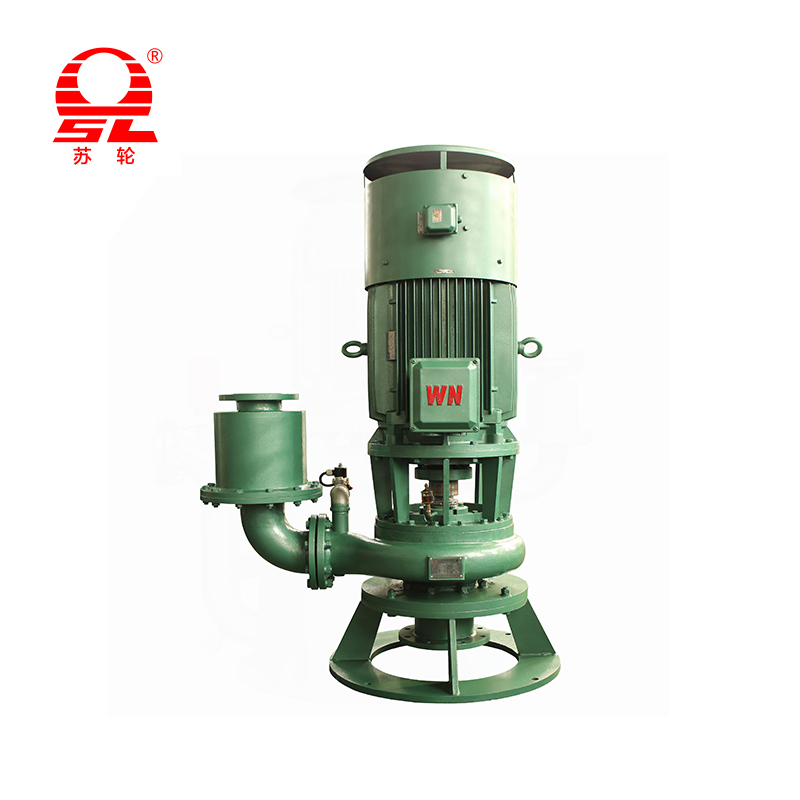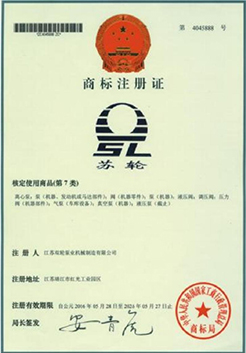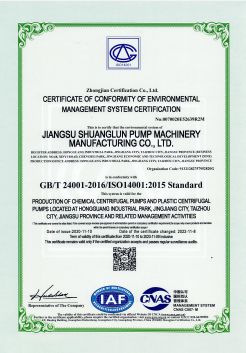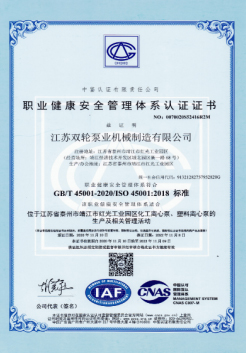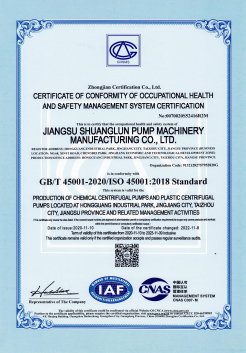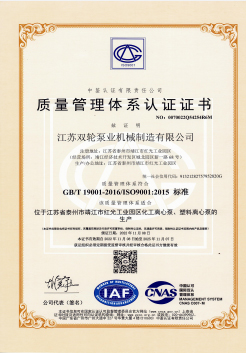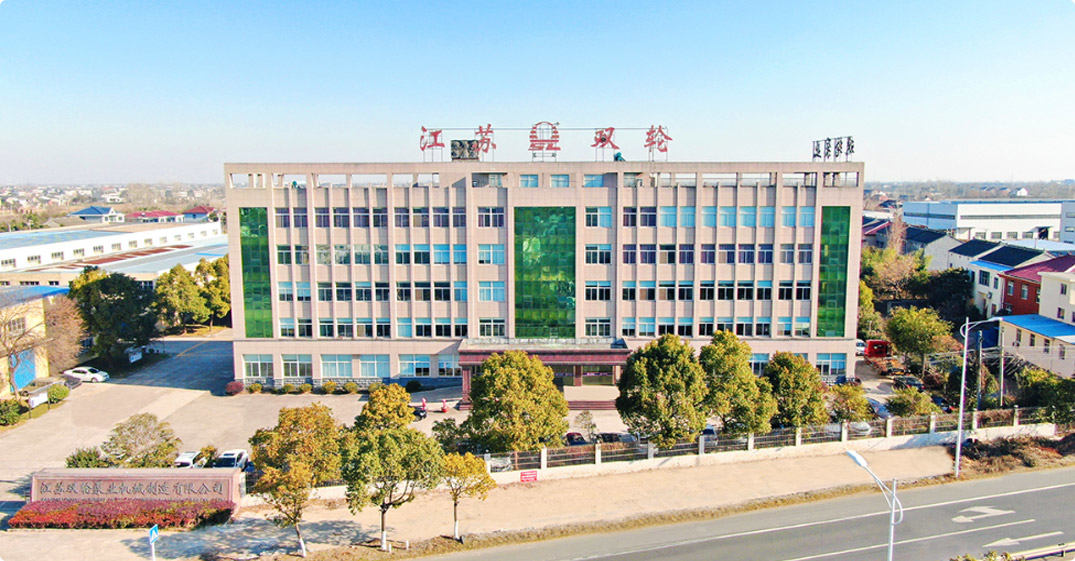
-
The SLW Series horizontal centrifugal pump is a cornerstone in industrial applications such as water treatment, chemical processing, and general circulation sys...
READ MORE -
The SLW Series horizontal single-stage end-suction centrifugal pump is a workhorse in industrial fluid handling, and its long-term stability and reliability hin...
READ MORE -
Sewage pumps play a critical role in municipal drainage, industrial wastewater treatment, and building drainage systems. Motor overheating is a common fault in ...
READ MORE -
In sewage treatment and drainage systems, centrifugal and submersible sewage pumps are the two most common types of pumps. Choosing the right pump type directly...
READ MORE -
The priming time of a self-priming pump refers to the time it takes from pump startup to stable liquid delivery. This time is not only a critical indicator of p...
READ MORE -
Self-priming pumps, as a special type of centrifugal pump, offer unique self-priming capabilities—they automatically expel air from the suction line and lift th...
READ MORE -
Horizontal centrifugal pumps play a critical role in industrial production, and vibration is a core indicator of their operating condition and reliability. Abno...
READ MORE -
Horizontal centrifugal pumps are the most commonly used fluid transport equipment in industrial processes, and their operational reliability directly impacts pr...
READ MORE
What is the working process of the self-priming pump?
The working principle of the self-priming pump is based on its unique structural design, which realizes the self-priming of liquid by generating internal negative pressure. At startup, the negative pressure inside the pump body forces the liquid to enter the pump cavity, and then the centrifugal force generated by the rotation of the pump impeller discharges the liquid, thereby maintaining continuous suction. The working process of the self-priming pump can be summarized into several key stages: pre-filling water before startup, self-priming process after startup, stable operation, and exhaust and maintenance after shutdown.
Pre-filling water before startup
Before starting the self-priming pump, it is crucial to perform the pre-filling operation. This process ensures that there is enough liquid inside the pump body to prevent air from entering the pump cavity and avoid cavitation or air blockage. Jiangsu Double Wheel Pump Machinery Manufacturing Co., Ltd. has specially optimized the structure inside the pump body in the design of its WFB series self-priming pumps to achieve rapid air removal and effective liquid suction. This improvement significantly shortens the water filling time before startup. Compared with traditional pump equipment, the self-priming pumps of Jiangsu Double Wheel Pump Machinery Manufacturing Co., Ltd. can quickly complete water filling and reach the best working state at the first startup.
Self-priming process after startup
After startup, the impeller of the self-priming pump starts to run, and the liquid in the pump body is introduced into the pump cavity through the suction pipe. At this time, the centrifugal force generated by the impeller throws the liquid to the outside of the pump body, forming a negative pressure area, exhausting the air in the pump cavity, and ensuring that the pump cavity maintains a negative pressure state. The self-priming pump of Jiangsu Double Wheel Pump Machinery Manufacturing Co., Ltd. has significantly improved the speed and intensity of negative pressure formation and accelerated the liquid suction process with its optimized impeller design. This design advantage enables the self-priming pump to start stably in an environment with low water source or unstable liquid level, and is widely used in various liquid transportation and rainwater recovery systems.
In addition, the self-priming pump of Jiangsu Double Wheel Pump Machinery Manufacturing Co., Ltd. is also equipped with an efficient gas-liquid separation device, which can effectively separate bubbles or air during the self-priming process to ensure that the pump cavity is always full of liquid. This feature is particularly important when handling liquids containing bubbles or impurities, which can effectively avoid cavitation and gas blockage problems, thereby improving the stability and service life of the equipment.
Stable operation
Once the self-priming pump is started and enters a stable operation state, the pump impeller will continue to rotate, continuously pushing the liquid flow through centrifugal force. At this stage, the negative pressure inside the pump body ensures the continuous suction and discharge of the liquid, and the liquid flows continuously from the suction pipe into the pump chamber and is discharged through the discharge pipe. The self-priming pump of Jiangsu Double Wheel Pump Machinery Manufacturing Co., Ltd. maintains its self-priming ability while ensuring efficient and stable operation without external water diversion. The use of wear-resistant and corrosion-resistant high-strength materials enables the pump to operate stably for a long time under complex working conditions, especially suitable for applications in high-demand industries such as chemical, metallurgical and sewage treatment.
During the stable operation of the self-priming pump, the sealing system specially designed by Jiangsu Double Wheel Pump Machinery Manufacturing Co., Ltd. effectively prevents liquid leakage. Unlike traditional pump equipment, the self-priming pump of Jiangsu Double Wheel Pump Machinery Manufacturing Co., Ltd. adopts a seal-free design, which avoids the leakage problem caused by the aging of traditional sealing materials, thereby improving the reliability of the equipment and the convenience of maintenance.
What are the common faults of self-priming pumps?
Self-priming pumps cannot start
The failure of self-priming pumps to start is one of the most common faults, which may be caused by a variety of reasons. First of all, the lack of liquid in the pump body is the direct cause of the failure to start. Before starting, self-priming pumps usually need to fill the pump chamber with a certain amount of liquid to ensure that the pump can smoothly inhale the liquid when starting. If the pump body is not pre-filled with water in time, the pump chamber will be filled with air, resulting in insufficient negative pressure when starting, and thus unable to complete self-priming.
The self-priming pump of Jiangsu Double Wheel Pump Machinery Manufacturing Co., Ltd. optimizes the pre-filling function in design, so that the self-priming process of the liquid can be completed quickly when the pump starts, avoiding the problem of failure to start due to untimely filling of water. Jiangsu Double Wheel Pump Machinery Manufacturing Co., Ltd. also makes personalized adjustments for different working environments to ensure that the pump can start smoothly under various liquid delivery conditions.
Self-priming pumps cannot maintain self-priming ability
Once the self-priming pump is started and starts running, it should be able to maintain its self-priming ability and continue to inhale and discharge liquid. If the pump loses its self-priming ability during operation, it may be due to the following reasons:
Air in the pump body: If there is air or bubbles in the pump cavity, the pump cannot generate enough negative pressure to suck the liquid. Common reasons include leakage in the pump body or suction pipe, or improper installation of the suction pipe.
Clogged suction pipe: If there are debris or sediments in the suction pipe, it may cause insufficient liquid flow, thus affecting the self-priming ability of the pump.
Liquid viscosity is too high: Self-priming pumps are suitable for liquids with good fluidity. For liquids with high viscosity, the self-priming ability of the pump may be affected.
The self-priming pumps of Jiangsu Double Wheel Pump Machinery Manufacturing Co., Ltd. can quickly remove the air in the pump body by adopting optimized gas-liquid separation technology and efficient impeller design, ensuring that the liquid is quickly sucked in and discharged from the pump body. In addition, the corrosion-resistant and high-temperature resistant materials used in the WFB series self-priming pumps enable it to maintain good self-priming performance in the transportation of high-viscosity liquids and liquids containing particulate matter.
Pump body leakage
Pump body leakage is one of the common faults of self-priming pumps, which mainly occurs in the sealing part of the pump. Traditional pump equipment uses mechanical seals, and the seal parts are prone to wear or aging after long-term operation, resulting in liquid leakage. For self-priming pumps, leakage problems may affect the normal operation of the pump or even cause the pump to stop working.
Jiangsu Double Wheel Pump Machinery Manufacturing Co., Ltd.'s self-priming pumps adopt a seal-free design. This innovation effectively avoids water leakage caused by seal failure. By optimizing the structure and materials of the pump body, the WFB series self-priming pumps can maintain good sealing performance, prevent liquid leakage, reduce equipment maintenance costs, and extend service life.
Cavitation phenomenon
Cavitation is one of the common faults of self-priming pumps, especially when there is air in the liquid suction pipe or insufficient suction liquid. Cavitation is caused by the low pressure in the pump chamber, the bubbles in the liquid evaporate and are compressed in the pump to form cavities, and the instantaneous rupture of the cavities will cause serious damage to the pump body and impeller. Cavitation not only reduces the self-priming ability of the pump, but also causes serious mechanical damage and even causes pump failure.
Jiangsu Double Wheel Pump Machinery Manufacturing Co., Ltd.'s self-priming pump can effectively prevent bubbles or gas from entering the pump cavity through an advanced gas-liquid separation device, thereby preventing cavitation. In addition, the special design in the pump body allows bubbles to quickly discharge from the pump cavity, ensuring the efficient operation of the pump and avoiding damage to the pump body caused by cavitation.
Insufficient flow or insufficient pressure
During the use of self-priming pumps, sometimes there will be insufficient flow or pressure, which may be caused by the following reasons:
Leakage in the suction pipe: If there is a leak in the suction pipe, the pump body may not form enough negative pressure, thereby affecting the suction and discharge of the liquid.
Wear of the pump impeller: As the core component of the self-priming pump, the impeller may cause wear of the impeller after long-term operation, which in turn affects the flow and pressure.
Too high liquid temperature or too high viscosity: Too high liquid temperature or too high viscosity will increase the load of the pump, thereby reducing the flow and head.

+86-0523- 84351 090 /+86-180 0142 8659

 English
English русский
русский عربى
عربى bahasa Indonesia
bahasa Indonesia

